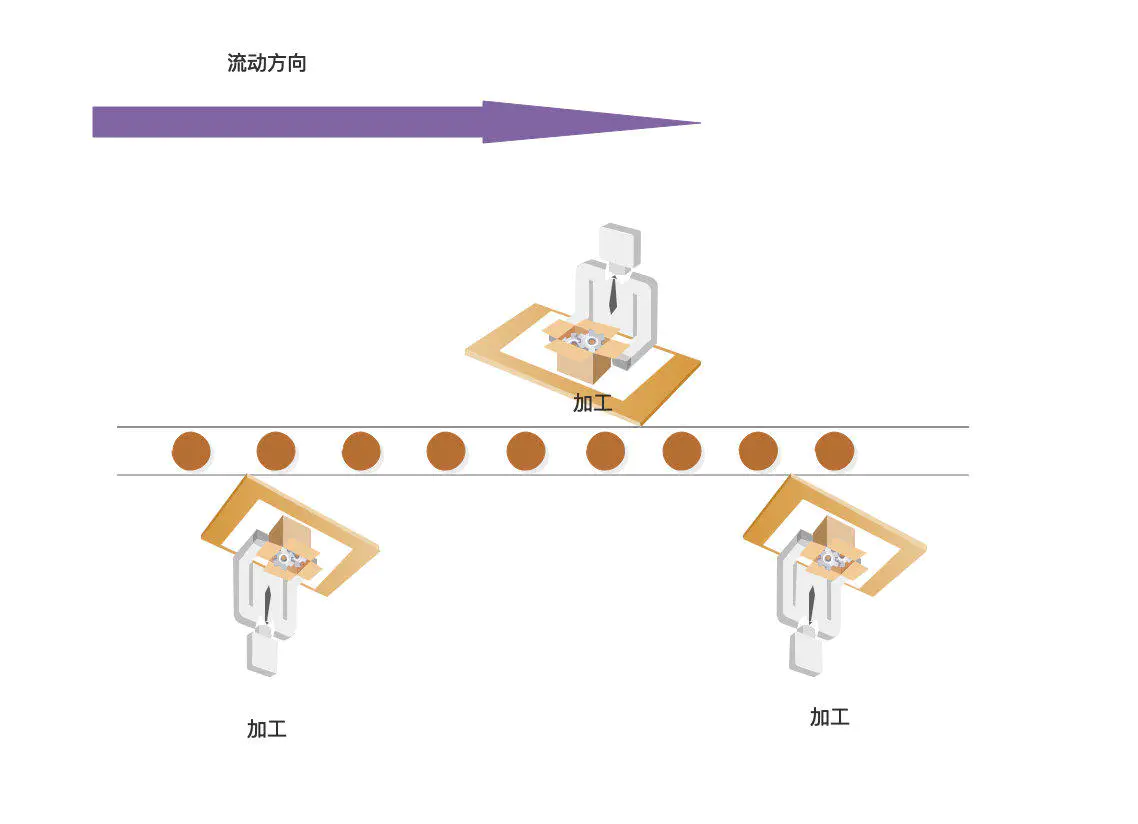Java 8 中的 Stream 是对集合(Collection)对象功能的增强,它专注于对集合对象进行各种非常便利、高效的聚合操作(aggregate operation),或者大批量数据操作 (bulk data operation)。Stream API 借助于同样新出现的 Lambda 表达式,极大的提高编程效率和程序可读性。它提供串行和并行两种模式进行汇聚操作,并发模式能够充分利用多核处理器的优势,使用 fork/join 并行方式来拆分任务和加速处理过程。

在没有Java8 stream之前,我们完成以下需求需要如此操作。
//获取Transaction的类型等于Transaction.GROCERY的对象,将所有满足条件的对象装入一个集合(过滤)List<Transaction> groceryTransactions = new Arraylist<>();for(Transaction t: transactions){if(t.getType() == Transaction.GROCERY){groceryTransactions.add(t);}}//根据某一个字段的值对集合进行排序Collections.sort(groceryTransactions, new Comparator(){public int compare(Transaction t1, Transaction t2){return t2.getValue().compareTo(t1.getValue());}});//将集合中对象的id字段找出来。List<Integer> transactionIds = new ArrayList<>();for(Transaction t: groceryTransactions){transactionsIds.add(t.getId());}
那么再拥有Java8 stream之后
List<Integer> transactionsIds = transactions.parallelStream().filter(t -> t.getType() == Transaction.GROCERY).sorted(comparing(Transaction::getValue).reversed()).map(Transaction::getId).collect(toList());
构建一个流对象
//将集合转成一个Stream对象List<String> list = new ArrayList<>();Stream<String> stream = list.stream(); //获取一个顺序流Stream<String> parallelStream = list.parallelStream(); //获取一个并行流//将数组转成一个Stream对象Integer[] nums = new Integer[10];Stream<Integer> stream = Arrays.stream(nums);//通过Stream的静态方法转换成流对象Stream<Integer> stream = Stream.of(1,2,3,4,5,6);Stream<Integer> stream2 = Stream.iterate(0, (x) -> x + 2).limit(6);stream2.forEach(System.out::println); // 0 2 4 6 8 10
流对象的操作分类
Stream的操作大体上分为两种:中间操作和终止操作。
流的中间操作
1)筛选与切片
filter:过滤流中的某些元素
limit(n):获取n个元素
skip(n):跳过n元素,配合limit(n)可实现分页
distinct:通过流中元素的 hashCode() 和 equals() 去除重复元素
Stream<Integer> stream = Stream.of(6, 4, 6, 7, 3, 9, 8, 10, 12, 14, 14);Stream<Integer> newStream = stream.filter(s -> s > 5) //6 6 7 9 8 10 12 14 14.distinct() //6 7 9 8 10 12 14.skip(2) //9 8 10 12 14.limit(2); //9 8newStream.forEach(System.out::println);
2)映射
将集合中每一个对象的某一个属性抽出来组成一个list或set。
List<Integer> transactionsIds = transactions.parallelStream().map(Transaction::getId).collect(toList());
3)排序
sorted():自然排序,流中元素需实现Comparable接口
sorted(Comparator com):定制排序,自定义Comparator排序器
List<String> list = Arrays.asList("aa", "ff", "dd");//String 类自身已实现Compareable接口list.stream().sorted().forEach(System.out::println);// aa dd ffStudent s1 = new Student("aa", 10);Student s2 = new Student("bb", 20);Student s3 = new Student("aa", 30);Student s4 = new Student("dd", 40);List<Student> studentList = Arrays.asList(s1, s2, s3, s4);//自定义排序:先按姓名升序,姓名相同则按年龄升序studentList.stream().sorted((o1, o2) -> {if (o1.getName().equals(o2.getName())) {return o1.getAge() - o2.getAge();} else {return o1.getName().compareTo(o2.getName());}}).forEach(System.out::println);
流的中止操作
1)匹配、聚合操作
allMatch:接收一个 Predicate 函数,当流中每个元素都符合该断言时才返回true,否则返回false
noneMatch:接收一个 Predicate 函数,当流中每个元素都不符合该断言时才返回true,否则返回false
anyMatch:接收一个 Predicate 函数,只要流中有一个元素满足该断言则返回true,否则返回false
findFirst:返回流中第一个元素
findAny:返回流中的任意元素
count:返回流中元素的总个数
max:返回流中元素最大值
min:返回流中元素最小值
List<Integer> list = Arrays.asList(1, 2, 3, 4, 5);boolean allMatch = list.stream().allMatch(e -> e > 10); //falseboolean noneMatch = list.stream().noneMatch(e -> e > 10); //trueboolean anyMatch = list.stream().anyMatch(e -> e > 4); //trueInteger findFirst = list.stream().findFirst().get(); //1Integer findAny = list.stream().findAny().get(); //1long count = list.stream().count(); //5Integer max = list.stream().max(Integer::compareTo).get(); //5Integer min = list.stream().min(Integer::compareTo).get(); //1
2)收集操作
collect:接收一个Collector实例,将流中元素收集成另外一个数据结构。
Collector
Supplier supplier():创建一个结果容器A
BiConsumer
BinaryOperator
Function
Set
CONCURRENT:表示此收集器支持并发。
UNORDERED:表示该收集操作不会保留流中元素原有的顺序。
IDENTITY_FINISH:表示finisher参数只是标识而已,可忽略。
Student s1 = new Student("aa", 10,1);Student s2 = new Student("bb", 20,2);Student s3 = new Student("cc", 10,3);List<Student> list = Arrays.asList(s1, s2, s3);//装成listList<Integer> ageList = list.stream().map(Student::getAge).collect(Collectors.toList()); // [10, 20, 10]//转成setSet<Integer> ageSet = list.stream().map(Student::getAge).collect(Collectors.toSet()); // [20, 10]//转成map,注:key不能相同,否则报错或者传入一个function作为key冲突时的解决方案Map<String, Integer> studentMap = list.stream().collect(Collectors.toMap(Student::getName, Student::getAge)); // {cc=10, bb=20, aa=10}//字符串分隔符连接String joinName = list.stream().map(Student::getName).collect(Collectors.joining(",", "(", ")")); // (aa,bb,cc)//聚合操作//1.学生总数Long count = list.stream().collect(Collectors.counting()); // 3//2.最大年龄 (最小的minBy同理)Integer maxAge = list.stream().map(Student::getAge).collect(Collectors.maxBy(Integer::compare)).get(); // 20//3.所有人的年龄Integer sumAge = list.stream().collect(Collectors.summingInt(Student::getAge)); // 40//4.平均年龄Double averageAge = list.stream().collect(Collectors.averagingDouble(Student::getAge)); // 13.333333333333334// 带上以上所有方法DoubleSummaryStatistics statistics = list.stream().collect(Collectors.summarizingDouble(Student::getAge));//分组Map<Integer, List<Student>> ageMap = list.stream().collect(Collectors.groupingBy(Student::getAge));//多重分组,先根据类型分再根据年龄分Map<Integer, Map<Integer, List<Student>>> typeAgeMap = list.stream().collect(Collectors.groupingBy(Student::getType, Collectors.groupingBy(Student::getAge)));//分区//分成两部分,一部分大于10岁,一部分小于等于10岁Map<Boolean, List<Student>> partMap = list.stream().collect(Collectors.partitioningBy(v -> v.getAge() > 10));
我们需要熟练掌握
.map() //抽取某个对象的属性
.collect(Collectors.groupingBy()) //将对象集合依据某一个对象属性值分组
.collect(Collectors.toMap()) //将对象集合映射成key-Obj的形式

